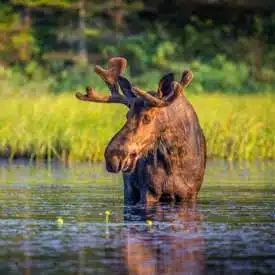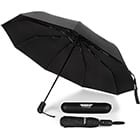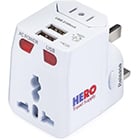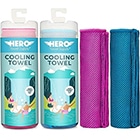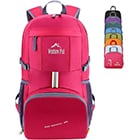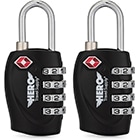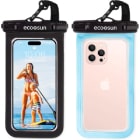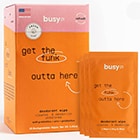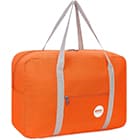SPRING (March, April, May)
Canada’s spring typically brings lots of rain mixed in with sunny days. Occasionally the temperature will even be high enough to warrant wearing shorts, but generally speaking, jeans, t-shirts, and sweaters are the ideal spring attire. Of course, you always need to be equipped with rain gear as well. A fleece jacket is perfect for keeping warm on brisk days and can be worn with a rain shell to shield you from the water. If it happens to be hot and rainy merely wear the rain shell without the fleece! As you can see, dressing in layers is critical in Canada.
When it comes to footwear, waterproof boots, whether they be rubber or leather, are ideal in the spring.
SUMMER (June, July, August)
Summer is the most magical time of year in Canada. The days are extra long and often warm. Though, there can be the occasional summertime bout of fog, wind, or rain, particularly on the coasts of the country. Be sure to pack light layers when visiting Canada during the summer. Shorts or jeans paired with a t-shirt will be perfect most of the time. In the interior provinces, you’ll experience much warmer temperatures; shorts and sundresses are definitely in order for those locations.
Don’t let the warm weather lull you into letting your guard down though, as spontaneous rain showers or foggy days are not unheard of. Come armed with fleece jackets or a thick flannel shirt, and a rain shell to protect you in case of emergency.
FALL (September, October, November)
Fall in Canada is usually pleasant and often is just an extension of the summer weather. However, it can be rainy and cold, especially as November draws near. Expect warm, pleasant days, and chilly nights.
Fall is when you can begin to transition your go-to footwear from sneakers to boots. Thick socks will keep your feet cozy on chilly days, and a fleece sweater will usually be a sufficient outer layer, as long as it isn’t raining.
WINTER (December, January, February)
Winters in Canada are no joke. You can expect, snow, ice, sideways rain, or a combination of the three, depending upon which region you’re visiting. Winter on the prairie provinces tends to be cold, but sunny, and with lots of snow.
Meanwhile, the east and west coasts are more humid and experience a combination of rain, snow, and ice.
Regardless of where you go, always pack warm layers to survive the Canadian winter. Wool socks and sweaters, jeans, fleece jackets, and of course a rain or snow jacket are all essential. For footwear, boots, or sneakers worn with thick socks are your best bet. Gloves, scarves and wool toques will offer additional protection from the elements. Though cold, winters can be sunny, so come prepared with sunglasses to shield your eyes — especially if there is snow on the ground.
How to dress for activities in Canada – (Click to expand)
Hiking/Recreation – Canada’s impressive wilderness draws tourists from all over the world who want to experience the incredible scenery first hand. If you’re one of them, be sure to come prepared. A run of the mill visit to a national park doesn’t require specialized equipment, because the majority of the trails are manicured. However, it’s always wise to wear waterproof hiking boots and lightweight hiking pants. A daypack comes in handy for carrying water and trail snacks.
Skiing – There are many world-famous ski hills in Canada which draw visitors through the winter and spring. Always be sure to pack appropriate cold weather clothing when skiing. You’ll want flexible, waterproof ski pants, an athletic, moisture-wicking top, and warm outer layers. On unusually cold days, long underwear will be a welcome addition to your ensemble.
Around Town – While nature is likely the first thing that comes to mind when Canada is mentioned, the country always features world-class cities, like Vancouver, Toronto, and Montreal. When exploring Canadian these large cities, dress in fashionable but casual clothing; leather boots, jeans, and a stylish outer layer will have you blending right in. For women, a crossbody purse with room for an emergency umbrella is ideal.
Dining Out – While most restaurants won’t mind casually dressed patrons, it’s always wise to bring a more formal outfit for fine-dining experiences. For women, a dress, or dark jeans paired with a cute sweater is appropriate, and for men, dark jeans, a collared shirt, and a blazer is ideal.




